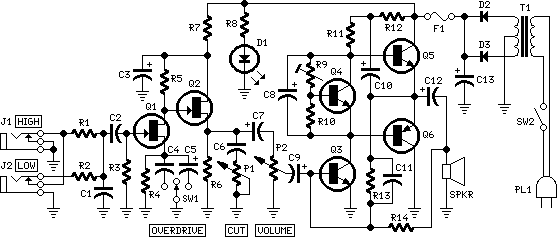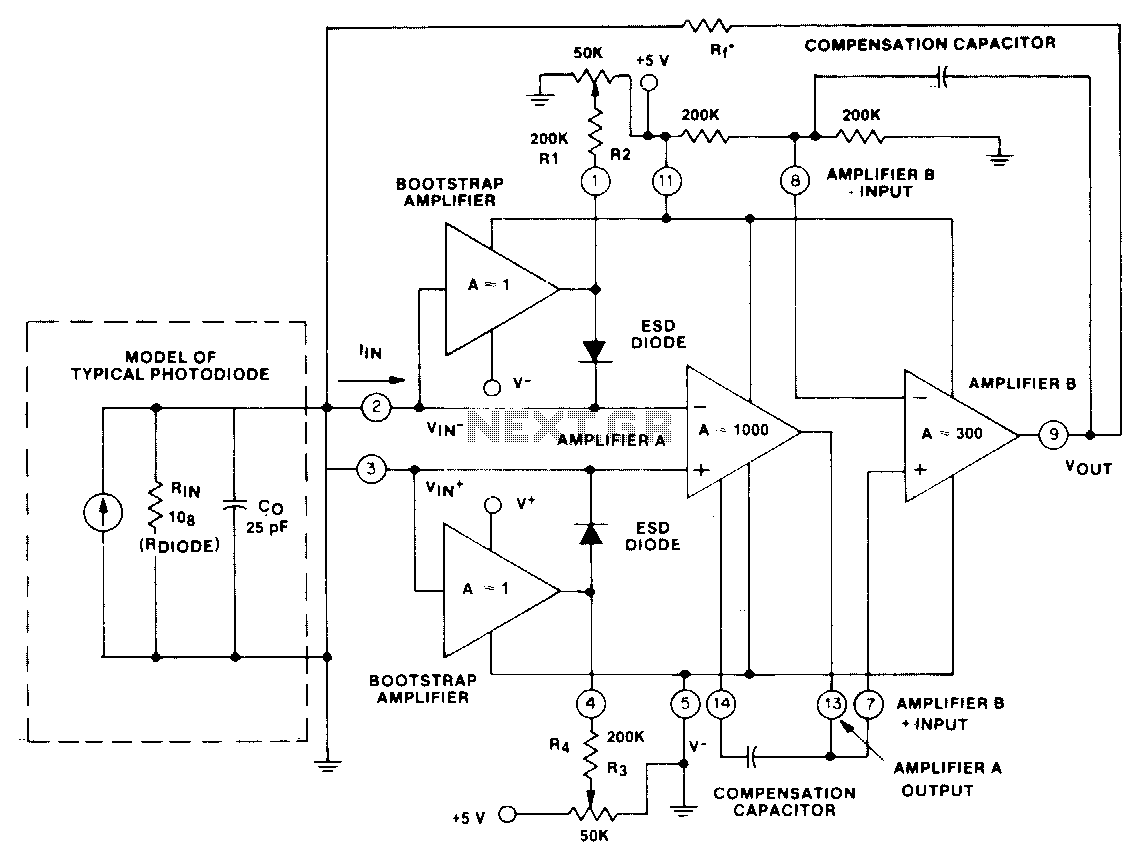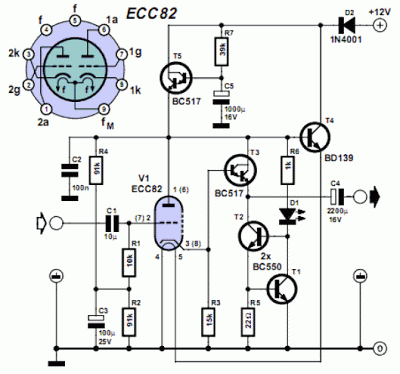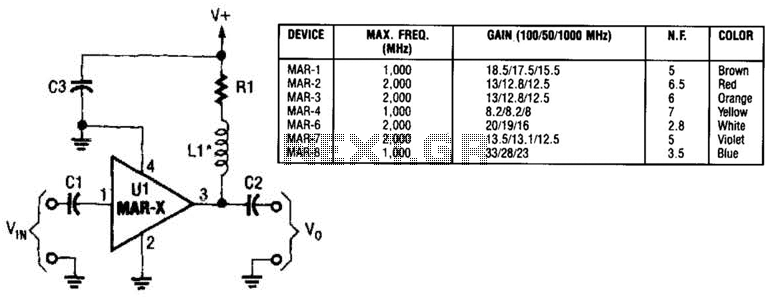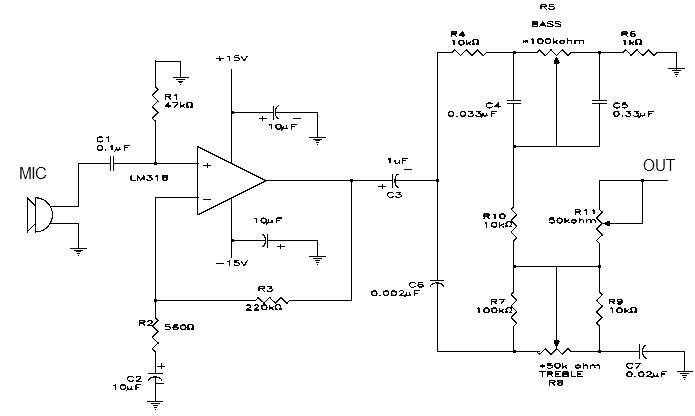
50 Watt Amplifier
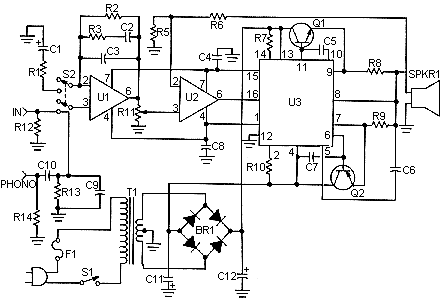
This is a convenient and straightforward general-purpose 50-watt amplifier. The amplifier features an input for connecting devices such as radios, TVs, or stereo equipment. Additionally, it includes a phono input suitable for connecting record players, guitars, microphones, or other unamplified sources. By incorporating a low-pass filter at the input, it can effectively function as an amplifier for a small subwoofer. There have been challenges in sourcing a suitable transformer (T1), but using two 24V 5A units in series is a viable alternative. For those constructing two amplifiers for stereo applications, repurposing an old microwave transformer by rewinding it is recommended. There may also be difficulties in locating component U3, as it has been discontinued.
The 50-watt amplifier circuit is designed to provide versatility for various audio applications. The primary input stage accepts line-level signals from common audio sources, allowing for integration with consumer electronics. The inclusion of a phono input further expands its functionality, accommodating devices that output lower-level signals, such as vinyl record players and musical instruments.
To enhance low-frequency performance, a low-pass filter can be added at the input stage. This filter allows the amplifier to effectively drive a subwoofer by filtering out higher frequencies that are not needed for bass reproduction. This modification can be particularly beneficial in home theater setups or music systems emphasizing low-end audio.
Power supply considerations are crucial for this amplifier. While sourcing an appropriate transformer (T1) may pose challenges, the suggested use of two 24V 5A power supplies in series can provide the necessary voltage and current requirements. For stereo applications, the option to rewind an old microwave transformer ensures that builders can create a suitable power source while repurposing existing materials.
It is important to note that some components, such as U3, may no longer be available due to discontinuation. Alternate sourcing or substitution with compatible components should be considered during the design and assembly process. Overall, this amplifier design offers a practical solution for audio amplification needs, catering to both casual users and audio enthusiasts.This is a handy, easy to build general purpose 50 watt amp. The amp has an input for a radio, TV, stereo or other line level device. It also has a phono input for a record player, guitar, microphone or other un-amplified source. With the addition of a low pass filter at the input, it makes a great amp for a small subwoofer. 3. I haven`t been able to find anyone who sells a suitable T1. You can always use two 24V 5A units in series. If you are building two amps (for stereo), then I would suggest using an old microwave transformer and rewinding it. 5. You may have trouble finding U3 because it is discontinued. Please don`t email me about sources. I can`t find it either. A possible source was sent in by JBWilliams: 🔗 External reference
The 50-watt amplifier circuit is designed to provide versatility for various audio applications. The primary input stage accepts line-level signals from common audio sources, allowing for integration with consumer electronics. The inclusion of a phono input further expands its functionality, accommodating devices that output lower-level signals, such as vinyl record players and musical instruments.
To enhance low-frequency performance, a low-pass filter can be added at the input stage. This filter allows the amplifier to effectively drive a subwoofer by filtering out higher frequencies that are not needed for bass reproduction. This modification can be particularly beneficial in home theater setups or music systems emphasizing low-end audio.
Power supply considerations are crucial for this amplifier. While sourcing an appropriate transformer (T1) may pose challenges, the suggested use of two 24V 5A power supplies in series can provide the necessary voltage and current requirements. For stereo applications, the option to rewind an old microwave transformer ensures that builders can create a suitable power source while repurposing existing materials.
It is important to note that some components, such as U3, may no longer be available due to discontinuation. Alternate sourcing or substitution with compatible components should be considered during the design and assembly process. Overall, this amplifier design offers a practical solution for audio amplification needs, catering to both casual users and audio enthusiasts.This is a handy, easy to build general purpose 50 watt amp. The amp has an input for a radio, TV, stereo or other line level device. It also has a phono input for a record player, guitar, microphone or other un-amplified source. With the addition of a low pass filter at the input, it makes a great amp for a small subwoofer. 3. I haven`t been able to find anyone who sells a suitable T1. You can always use two 24V 5A units in series. If you are building two amps (for stereo), then I would suggest using an old microwave transformer and rewinding it. 5. You may have trouble finding U3 because it is discontinued. Please don`t email me about sources. I can`t find it either. A possible source was sent in by JBWilliams: 🔗 External reference
